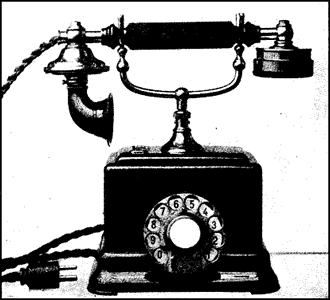 BT has recently partnered with network services outfit Comms365 to provide contingency 4G connectivity to BT Exchanges in outlying areas, such as Shetland and the Orkney Islands, so the company can resolve any connection issues remotely.
BT has recently partnered with network services outfit Comms365 to provide contingency 4G connectivity to BT Exchanges in outlying areas, such as Shetland and the Orkney Islands, so the company can resolve any connection issues remotely.
Previously, if the connection went down at a BT Exchange, the company would have to send specialist engineers out to the islands to fix the fault, which could take up to a week depending on travel logistics and potentially inclement weather. Not only did this result in unnecessary downtime, but also required engineers to be away from the Network Centre for a significant amount of time, resulting in needless expense for the business. To address the problem, BT was looking for a way to deploy 4G access services to interface to its equipment as a disaster recovery solution, in the event that the broadband connection was lost at the site.
The company turned to Comms365 to deploy its 4G solution at the outlying BT Exchanges so that in the case of a connection issue, engineers at the Network Centre in Manchester could connect remotely to the equipment in order to diagnose the fault and quickly make any necessary changes. One of the primary challenges was that the different locations vary in terms of 4G coverage levels, but with the Comms365 fixed IP Multinet service roaming across all UK networks, the solution easily overcame any issues of coverage or network outages.
BT has deployed the Comms365 solution in two remote Exchanges in Scotland, with plans to roll out into two further locations in summer 2018. The company’s long term plan is to roll out the solution to several other Exchanges across the country, such as Cambridge, Cardiff and London, but the outer regions, including Stornoway and Skye, are being considered first due to their locations and the challenge involved in resolving connection issues.
Phyl Jewkes, 20C Core Transmission Manager at BT said: “It’s imperative that all of our customers receive as reliable a connection as possible, so in the event that a connection goes down we do everything we can to ensure that the connection is restored quickly, no matter how distant the location. With the solution from Comms365 in place, we can rapidly identify and fix any issues remotely without having to send an engineer to the site. Not only does this save us valuable time, but is also a cost-saving solution too. It’s been a really successful partnership and we’re looking forward to working with the team to roll it out to further sites in the future.”
 Network services outfit Comms365 has launched a package of Fixed IP 4G Data services.
Network services outfit Comms365 has launched a package of Fixed IP 4G Data services.

















